If you are looking for a way to start Windows Laptop or Desktop computer in Safe Mode, you can find below different ways to start Windows 10/11 in Safe Mode.
When you start Windows computer in Safe Mode, it starts up in its most basic state, using only the most essential system files and drivers required to boot the computer.
This allows you to troubleshoot problems on your device by identifying the App, Program or the most recent change that is causing problems on your device.
Start Windows 10/11 in Safe Mode
As mentioned above, there are multiple way to start Windows 11/10 in Safe Mode. Depending on the circumstances, you can select from any of the following methods to start your computer in Safe Mode.
1. Start Windows in Safe Mode Using Settings
If you are logged-in to the computer, you can Enter Safe Mode by using the Recovery option as available in the Settings App on your computer.
1. Open Settings > select System in left-pane. In the right-pane, scroll down and click on the Recovery tab.
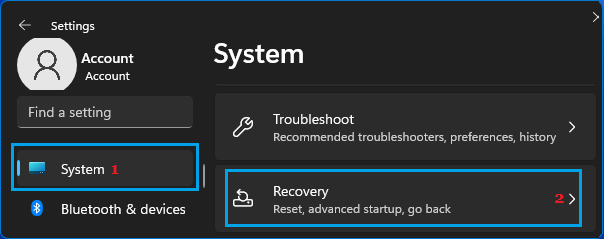
2. On the Recovery screen, scroll down in the right-pane and click on Restart Now button located next to Advanced Startup.

Windows 10: Go to Settings > Update & Security > Recovery > click on Restart Now button.
4. On the confirmation pop-up, click on Restart Now to confirm.
5. After the computer restarts, click on the Troubleshoot option.
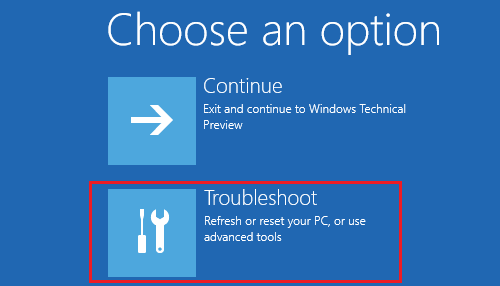
6. From the Troubleshoot screen, navigate to Advanced options > Startup Settings and click on the Restart button.
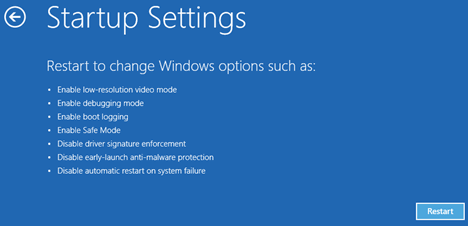
7. After the computer restarts, press the F4 key to Boot Windows in Safe Mode.
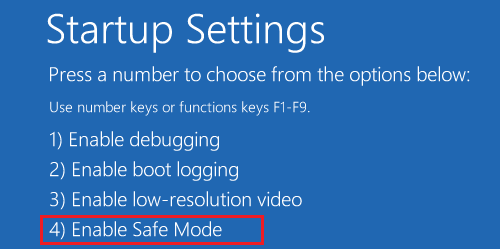
2. Start Windows in Safe Mode Using Run Command
Another way to enter Safe Mode is by using Run Command as available in Windows 11 operating system.
1. Right click on Start button and click on Run.
2. In the Run Command Window, type msconfig and click on OK.

3. On the next screen, switch to Boot tab and select Safe Boot with Minimal option and click on OK.
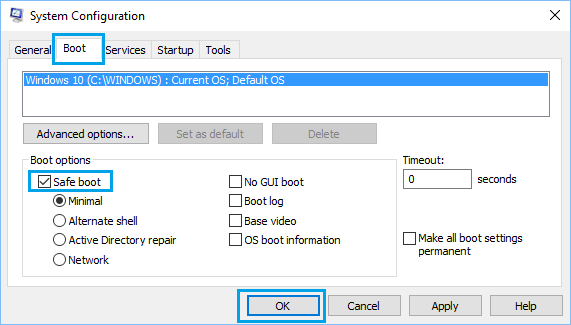
4. On the pop-up, select the Restart option to start the process of starting the computer in Safe Mode.
When the computer Restarts, it will be in Safe Mode with a Dark Background and you will see the words “Safe Mode” on all 4 corners of the screen.
3. Enter Safe Mode from the Login Screen
If you start the computer but cannot get past the login screen, you can enter Safe Mode by using the Restart option as available on the login screen.
1. Click anywhere on the screen and this should take you to the login screen.
2. On the login screen, press and hold the Shift Key on the keyboard of your computer and select the Restart option.

3. After the computer restarts in recovery mode, click on the Troubleshoot option.

4. From the next screen, navigate to Advanced options > Startup Settings and click on the Restart button.

After the computer restarts, press the F4 key to Start Windows 11 in Safe Mode.
How to Exit Safe Mode?
All that is required to Exit Safe Mode on a Windows computer is to Restart the computer and it will start in regular Windows mode.
Note: If you are using the second method (Safe Mode using Run Command), you need to uncheck the Safe Boot option and restart the computer.